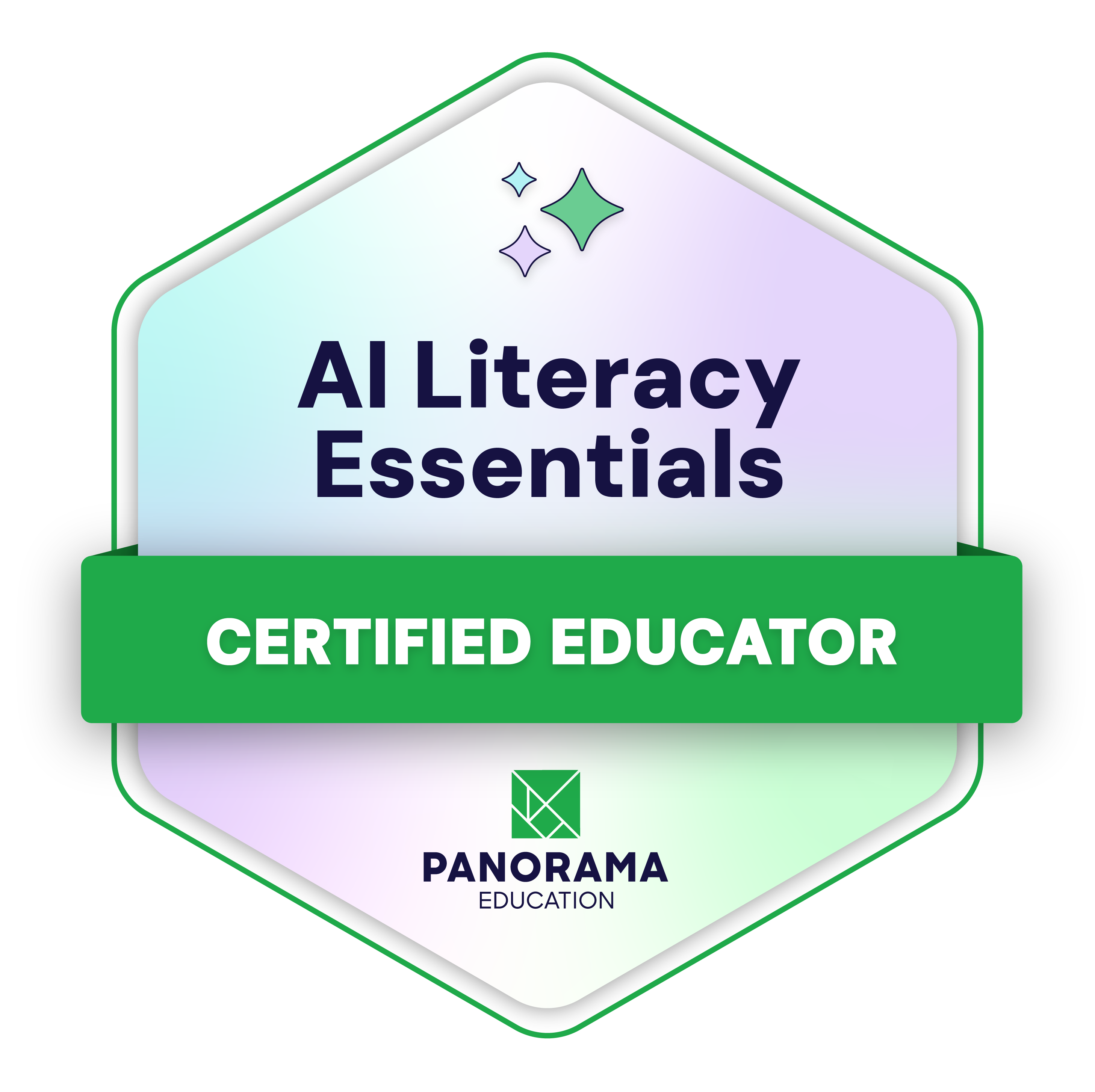Teaching is a demanding profession that requires immense energy, empathy, and commitment—week in and week out. On average, educators work 53 hours per week, far exceeding the standard for most other professions. It’s no wonder many teachers arrive at summer feeling drained and on the brink of burnout. And yet, instead of fully stepping away, some find themselves diving straight into next year’s planning.
But summer doesn’t have to be an all-or-nothing season. You don’t need to choose between total unplugging or detailed curriculum design. This guide offers a balanced approach—one that helps you reflect, recharge, and set purposeful, flexible goals. With the right strategies, you can lay the foundation for a successful school year while still protecting your personal well-being.
.png?width=3300&height=1100&name=District%20Leader%20%20Broad%20Promo%20Email%20-%20FINAL%20(1).png) The Guide to Summer Lesson Planning
The Guide to Summer Lesson Planning
Summer planning is best spent focusing on high-level preparations. Rather than diving into detailed daily lesson plans right away, consider approaching them later—flexibly, in a controlled and deliberate way that reduces stress and leaves room for creativity.
Here’s where to start:
-
Reflect on the past year: Take time to consider what teaching approaches resonated with students. Review your units and note which activities sparked engagement or improved academic performance.
- Map out unit plans and pacing guides: Rather than create detailed daily plans, sketch unit outlines and pacing guides that provide structure while leaving room for improvement.
-
Organize teaching materials: Start by sorting your materials into broad, functional categories—think intervention resources, assessment tools, and classroom management. Since you may not know your specific courses or sections yet, it’s too early to organize by subject. Instead, set up flexible storage systems using clear, labeled containers or folders. Choose labels that are easy to adjust later so you can quickly pivot once your teaching assignments are confirmed.
-
Set Broad Objectives: Avoid getting too specific before you’ve had a chance to meet your students and understand their needs. Instead, focus on establishing broad teaching goals—such as fostering a positive classroom culture, building student engagement, or integrating formative assessment strategies. These flexible objectives will serve as a strong foundation and can be easily tailored once you have a clearer picture of your classroom context.
-
Explore new strategies, tools, and curriculum resources: Summer is the perfect time to brush up on new instructional styles, assessment strategies, or technical innovations. With fewer day-to-day demands, you can learn at your own pace and return to the classroom feeling inspired and prepared to try something new.
-
Test out AI tools to optimize your teaching processes: AI tools can help with the routine aspects of lesson development, including generating creative activities, suggesting intervention plans, and creating assessment materials.
Prioritize Self-Care and Well-Being
Before diving into any professional preparation, take time to care for yourself. Your effectiveness in the classroom is directly tied to your mental, emotional, and physical health. Use summer to rest, recharge, and reconnect with the things that bring you joy:
-
Set boundaries around planning time. Dedicate specific hours to planning, and protect the rest for true rest. Clear boundaries help you stay productive without letting work take over your break.
-
Engage in restorative activities. Make time for hobbies, mindfulness practices, and physical activities that help you recharge.
-
Practice intentional rest. Give yourself permission to truly unwind—no guilt, no pressure to be productive every moment. Rest is preparation, too.
-
Establish a balanced summer routine. Build a loose structure that includes both planning and personal time. This can ease the discomfort of unstructured days and help you stay grounded during the break.
Get Organized Earlier
Lay the groundwork with flexible frameworks—like unit outlines, routines, or pacing guides—that can be easily refined once you meet your students. This scaffolding sets you up for smoother, more responsive planning later.
-
Map Yearly Curriculum: Create a visual chart that outlines the subjects you’ll be teaching in the next school year. This map should divide the academic year into logical segments (quarters, trimesters, or units) and should include the major concepts, essential skills, and big ideas you’ll want students to master.
-
Use Unit Planning Templates: Look for unit planning templates that are broad enough to be adapted to different grade levels. Each should include spaces for essential questions, learning objectives aligned to standards, key vocabulary, and assessments.
-
Organize Resources and Templates: A little organization now will save many hours throughout the school year. Take a few hours during summer to build clean, logical systems that reduce daily friction and preserve your energy when school starts.
-
Prioritize Digital Organization: Clean up your files, organize lesson plans, and set up new folders by unit or quarter. This streamlines access during the school year.
-
Create Editable Templates: Editable templates can help streamline common tasks like rubrics, parent letters, and sub-plans. Consider using AI tools to quickly generate customizable templates that you can tailor to your classroom needs.
Incorporate Active Learning Strategies
Studies have shown that active learning boosts student engagement, reduces failure rates, and improves test scores. Summer is an ideal time to explore these approaches and begin thinking through how to bring them into your classroom.
Consider incorporating strategies like project-based learning or student-led demonstrations. Active learning encourages students to participate, collaborate, and think critically—enhancing both their understanding and retention of material across subjects.
Plan for Student Engagement and Belonging
As teachers well know, the emotional dimensions of learning deserve as much consideration as academic content. These elements form the foundation of academic success:
-
Community Building: Reflect on ways to increase student belonging from day one. One effective way to do this is through relationship mapping. In relationship mapping, you visually chart connections between students and supportive adults in the school community, ensuring every student has at least one strong relationship with a teacher or staff member. Complement this with other activities like sharing circles and get-to-know-you questions.
-
Soft Starts: Plan for “soft starts” during the first week back—activities that prioritize community-building and smooth reentry over immediate academic instruction. A gentle return helps ease students (and teachers) into the rhythm of the school year.
Design engaging icebreakers and team-building exercises that surface student interests, strengths, and personalities. These early interactions lay the groundwork for a supportive classroom culture and stronger peer relationships.
Utilize Available Resources
Summer gives you the freedom to explore educational topics that truly spark your curiosity—without the usual deadlines or external pressure. It’s a chance to reconnect with the “why” behind your teaching.
Take advantage of the many tools and resources available to deepen your learning and enhance your preparation. Whether it’s a new instructional model, classroom tech, or research in your content area, small discoveries now can lead to big impact later.
-
Professional Development: Consider engaging in professional development to strengthen your teaching strategies and stay inspired. This could include taking a course, exploring AI tools your district may be offering, finally diving into that education book on your nightstand, or tuning into a podcast series during a walk. Even small, self-directed learning moments can spark fresh ideas for the year ahead.
-
Educational Tools: Explore educational tools and resources that can aid in lesson planning and classroom management. This might include content-specific resources, assessment tools, communication platforms, or classroom management systems. Many offer free access or trial periods, allowing you to test their functionality over the summer.
Things to Keep in Mind Before Starting Planning
Before diving into summer planning, remember—your approach should support your teaching, not add unnecessary stress. Prioritizing balance between work and rest is essential. Keep these key considerations in mind as you move forward:
-
Focus on High-Impact Planning Activities: Identify the preparation tasks that will truly make a difference when school begins. Batch similar planning activities into focused sessions rather than scattered efforts. Begin with broader teaching goals, then select specific preparation tasks that directly support these priorities.
-
Protect Rest Periods: Designate specific, limited windows for school-related activities while safeguarding time for complete disconnection. Clear boundaries ensure that you meet your professional growth and personal needs.
-
Practical Tips for Resource Management: Establish consistent naming conventions for digital files, thoughtful arrangements for physical materials, and efficient inventory systems for supplies. The goal isn’t perfection but creating systems that reduce daily friction.
Boost Summer Planning with Panorama Solara
Effective summer planning should support your success and your well-being. With Panorama Solara, a leading customizable, district-wide AI platform, you can prepare smarter—not harder—for the year ahead.
With Solara, Educators can easily access a library of pre-built, research-backed prompts and tools to quickly create lesson plans—and more! Solara can help teachers differentiate Tier 1 instruction and align their lessons to district standards. Plus, upload any text to generate reading passages matched to your students’ reading abilities.
Whether you're drafting lesson plans, building family communication templates, or exploring student data, Solara saves you time so you can focus on what matters—and still enjoy your break.
Panorama Solara is designed specifically for K-12 education, offering:
- AI-powered lesson planning to support educators with high-quality materials.
- Personalized learning insights to help teachers craft intervention plans.
- Attendance monitoring and early intervention tools to reduce chronic absenteeism.
- Secure, district-aligned AI that protects student data and supports responsible AI use.




.jpg)

.jpg)
